|
Here's a look at some of this week's stories from the Department of Natural Resources:
See other news releases, Showcasing the DNR stories, photos and other resources at Michigan.gov/DNRPressRoom.
PHOTO FOLDER: Larger, higher-res versions of some of the images used below are available in this folder.
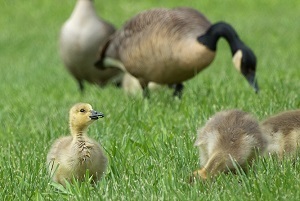
Around Michigan this spring, some people may find a surprise in their gardens and flower boxes, or even in landscaping near office buildings. Bird nests can be found in some interesting locations.
Female mallard ducks often build nests in landscaping, gardens or other unlikely places. If you do come across a duck’s next, simply leave it alone. If the eggs hatch, the mother will lead her ducklings to the nearest body of water, often the day they hatch.
Canada geese sometimes build nests near houses or in parks, often near water. Like mallards, geese will lead their young to water soon after hatching. Because adult geese can be protective of nests and young, they may chase people or animals away by hissing and running or flying toward the intruder. If possible, avoid the nesting area. If you must go near the area, carry an umbrella and gently scare the bird away by opening and closing the umbrella.
Mute swans also can be plenty protective. As with Canada geese, give the swan family ample room. Try not to walk or boat near the family to avoid conflicts.
|

Nests built in your yard already may have baby birds just starting to outgrow them. It’s common to find birds on the ground after a first attempt at flight. If you find one, don’t touch it. The parents will continue to care for it, even on the ground. One exception: If you find a sparsely feathered chick on the ground, it may have accidentally fallen from the nest before it is ready to fly. If you know where the nest is, return the chick only if you can do so safely.
Get more tips on handling baby birds, rabbits, fawns and other found wildlife on the DNR’s Keep Wildlife Wild webpage.
Only licensed wildlife rehabilitators may possess abandoned or injured wildlife. Unless someone is licensed, it is illegal to possess a live wild animal in Michigan. Find a licensed rehabilitator directory at Michigan.gov/Wildlife or by calling a local DNR biologist.
Questions? Contact Holly Vaughn, 313-396-6863.
|
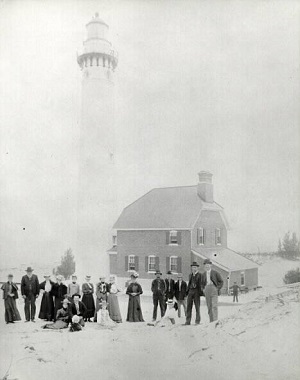
When scientists shared a 2017 survey on Michigan sand dunes – seeking information about how the dunes were used and enjoyed – some 3,600 people responded, recording more than 7,000 dune visits.
"Survey data is helping us understand how people experience and value Michigan coastal dunes," said Karen Boase, coastal habitat coordinator with Office of the Great Lakes. "Now, those researchers need the public’s help to protect dunes so we can enjoy them into the future."
Do you have dune photos 25 years old or older? Share them with the Sands of Time project team to help scientists track how dunes have moved and changed over time.
Michigan’s dunes, the largest freshwater system in the world, are home to wildlife like piping plovers, swallowtail butterflies and box turtles. Data and modeling to predict changes will contribute to science-based management decisions, helping protect and conserve these species.
The Sands of Time project is managed by the Michigan Environmental Council, supported by the Michigan Coastal Program and National Oceanic and Atmospheric Administration.
Questions? Contact Rachel Coale, 517-290-4295.
The dune photo above is provided courtesy of the Archives of Michigan.
|

A total of 118 Michigan communities, five campuses and two utilities have earned Tree City, Tree Campus or Tree Line USA designations for 2018. Two new communities – Ludington and Petoskey – were among those certified.
The Tree City USA program promotes the proper care and management of community trees and calls attention to the benefits trees provide. This year’s recognized honorees were certified for work accomplished in 2018. Michigan currently ranks eighth nationally in number of certified communities.
“Trees are not only beautiful, but they also help clean the air, reduce stormwater runoff, provide shade and reduce cooling costs, and provide many other benefits,” said Kevin Sayers, coordinator of the DNR’s Urban and Community Forestry program. “Tree City USA designation tells people that your community values public trees as important assets.”
To be eligible for certification, a community must have:
- A designated board or department responsible for tree care issues.
- A local public tree ordinance.
- A budget for public tree care of at least $2 per capita.
- An annual Arbor Day celebration and official Arbor Day proclamation.
|
College campuses, utilities recognized, too

The DNR also recertified two Tree Line USA utilities (Lansing Board of Water and Light and ITC Holdings).
Participation in the Tree Campus USA program continues to grow, with five campuses – University of Michigan, Calvin College, Washtenaw Community College, Michigan State University and first-time honoree Hope College – earning that designation. These programs encourage utility companies and college campuses to offer tree care education programs and sponsor tree-planting events as part of their commitment to maintaining healthy, local urban forests and trees. Learn more about the Arbor Day Foundation’s Tree USA programs at ArborDay.org/Programs.
Questions? Visit Michigan.gov/UCF or contact Kevin Sayers, 517-284-5898.
The above photo is provided courtesy of Calvin College.
|
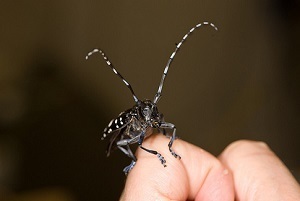
Most people would agree that invasive species that do damage to trees and plants – Asian longhorned beetle and spotted lanternfly, for example – have no place in Michigan. Unfortunately, many residents unwittingly play the part of transporter for these and other pests that can quickly take hold and do serious damage to the native plants and trees we most want to protect on the landscape.
To draw more attention and boost the public's knowledge about actions people can take to minimize the movement of such pests, a federal agency recently shined a spotlight on the situation, and Michigan's Invasive Species Program shared the news last week:
Spring is here and many people are on the move – so are many plant and tree pests. The U.S. Department of Agriculture - Animal and Plant Health Inspection Service has designated April as invasive plant pest and disease awareness month to remind travelers to do their part to prevent the spread of these destructive invaders. ... Read the full story.
Photo above courtesy of the U.S. Department of Agriculture.
|
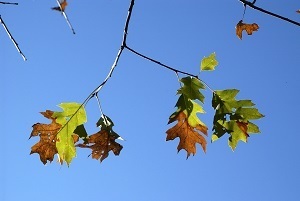
To keep oak trees healthy, don’t prune them from mid-April through the summer. According to the Michigan DNR, that’s a key infection time for oak wilt, a serious disease that can weaken white oaks and kill red oak trees within weeks.
“We’re asking residents to take extra precaution with their oak trees as spring gears up,” said DNR Forest Resources Chief Deb Begalle. “Waiting to prune until fall will go a long way in preventing the spread of this disease.”
Oak wilt, caused by a fungus, has been reported throughout the Midwest, including Michigan. Trees in the red oak group (including black, northern red and northern pin oaks) have leaves with pointed tips and are most susceptible. Trees in the white oak group (including white and swamp white oak) have rounded leaf edges and are less susceptible.
Affected trees suddenly will begin to wilt from the top down, rapidly dropping leaves, which can be green, brown or a combination of both colors.
Oak wilt is spread above ground mainly by sap-feeding beetles that carry disease spores from infected trees, or wood cut from infected trees, to fresh wounds on healthy trees. The infection also spreads below ground, through root grafts.
|
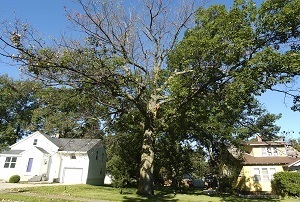
If you must prune or remove oaks during the April 15-July 15 risk period, or have a tree that gets damaged, immediately cover all wounds with tree-wound paint or latex-based paint.
Don’t move firewood, especially if it comes from oak wilt-killed trees. If you suspect firewood is tainted by oak wilt, cover it with a plastic tarp all the way to the ground, leaving no openings. This keeps beetles from moving spores from the firewood to healthy trees. Once the firewood has dried at least a year and/or all the bark loosens, the disease can no longer be spread.
For assistance:
Questions? Contact James Wieferich, 517-284-5866.
|
|